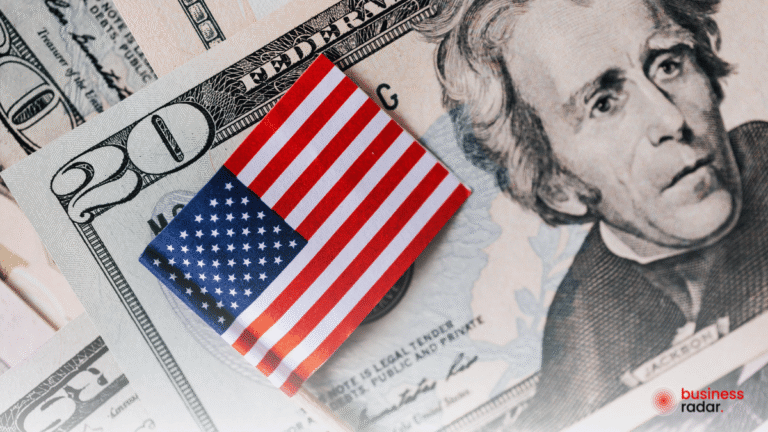NEW YORK, Sept 17 (Business Radar US) – The U.S. dollar lost ground on Wednesday after the Federal Reserve announced a 0.25 percentage point interest rate cut, signaling that additional reductions could follow before year-end. This shift in monetary policy has sparked immediate reactions in the global currency markets, with investors recalibrating their expectations for the greenback, the euro, and the Japanese yen.
Federal Reserve’s Rate Cut Explained
The Federal Reserve’s decision to lower borrowing costs marks the first step in what analysts believe could be a broader easing cycle. Policymakers cited slowing growth, persistent inflation pressures, and the need to support labor market resilience as reasons behind the move. A reduction of 0.25 percentage points may seem modest, but the Fed’s forward guidance of steady cuts throughout the rest of 2025 has created strong expectations that the dollar will face sustained downward pressure.
Lower interest rates reduce returns on U.S. assets, making the dollar less attractive to global investors. This often leads to capital outflows and increased demand for alternative currencies such as the euro or yen.
Euro Gains Against the Dollar
The euro climbed 0.2% to $1.1894, reflecting renewed investor confidence in Europe’s currency. The euro vs dollar outlook has been a focal point for traders who see the European Central Bank maintaining a more cautious stance compared to the Fed.
If the ECB holds rates steady while the Fed cuts aggressively, the interest rate differential will likely narrow in favor of the euro. This could push the EUR/USD pair closer to the $1.20 psychological level, a point where many technical analysts believe significant resistance exists.
Yen Strengthens as Investors Seek Safe Havens
The dollar also weakened against the Japanese yen, falling 0.5% to 145.78 yen. Historically, the yen strengthens during times of U.S. policy easing, as investors turn to safe-haven currencies. The yen exchange rate after the Fed decision suggests that traders are bracing for potential volatility in U.S. markets and shifting funds toward lower-risk assets.
If the Federal Reserve continues its rate-cutting path, the yen could test the 145.00 level, with further gains possible if global risk sentiment deteriorates.
Broader Market Implications
Currency moves are not occurring in isolation. Lower U.S. rates ripple across global equity and bond markets. Cheaper borrowing costs tend to lift stock valuations, but they also compress yields on Treasury securities, further diminishing dollar appeal.
Emerging market currencies, often sensitive to U.S. monetary policy, could also benefit. A softer dollar eases external debt burdens for developing economies, potentially driving stronger capital inflows into Asia and Latin America.
What Traders Should Watch Next
Looking ahead, investors will closely monitor:
- Upcoming Fed meetings for signals of faster-than-expected rate cuts.
- Inflation data to see if easing monetary policy risks reigniting price pressures.
- ECB and Bank of Japan policies, which will shape relative performance between the euro, yen, and dollar.
- Market sentiment toward equities and commodities, which often correlates with currency movements.
Conclusion: Dollar Faces Pressure After Fed Cut
The Federal Reserve’s decision to cut rates by 0.25 percentage points has already weakened the dollar, boosting the euro and yen. With policymakers hinting at additional easing ahead, the U.S. dollar outlook after the Fed rate cut appears tilted toward further losses.
For businesses, investors, and policymakers, these moves highlight how interconnected global markets remain. The euro, yen, and emerging market currencies are likely to see stronger demand as the greenback adjusts to a lower-rate environment.


